
This article mainly shares with you how to write vue plug-ins. Before learning, ask yourself why you should write vue plug-ins.
In a project, especially a large project, there are many parts that need to be reused, such as loading animations and pop-up boxes. It is a little troublesome to reference one by one, and if there are too many components referenced in a vue file, the code will appear bloated, so there is a need to encapsulate the vue plug-in.
After talking about the requirements, let’s take a look at the specific implementation. At present, I have tried two different plug-in writing methods, and I will introduce them one by one.
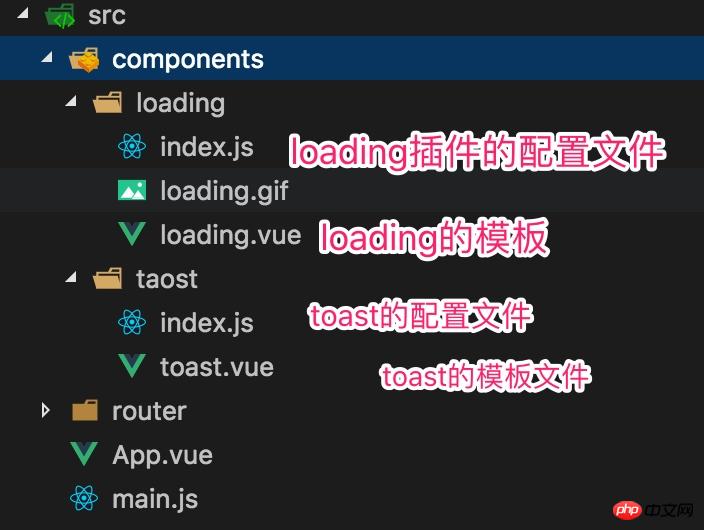
This is my project directory. The general structure is explained like this, as simple as possible and easy to understand.
One is the loading plug-in and the other is the toast plug-in. The difference is that the loading plug-in is introduced as a component, while the toast plug-in is directly added to the mount point and called by changing the status of the method.
Currently used is Jiangzi:
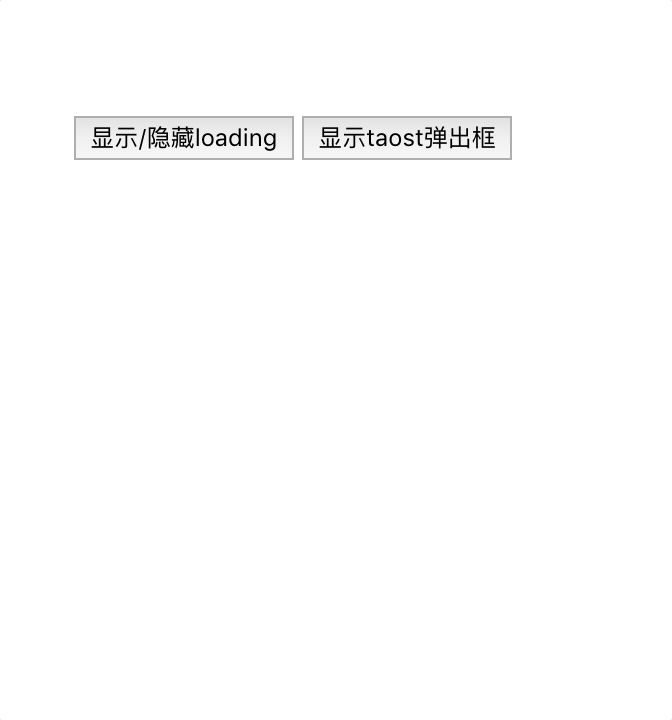
toast plug-in
There are two files under the toast file, the file with the suffix vue is The skeleton of this plug-in, the first js file is to put this skeleton into the Vue global and write the operation logic.
You can take a look at the content of toast.vue:
{{message}}
The main thing here There are only two contents,showthat determines whether to display andmessagethat determines what content to display.
After a quick look here, do you find any problems?
There is nopropsattribute in this file, that is, whether it is show or message, there is no way to modify it through parent-child component communication. So how do they handle it correctly? Of. Don't worry, let's take a look at his configuration file.
index.js:
import ToastComponent from './toast.vue' const Toast = {}; // 注册Toast Toast.install = function (Vue) { // 生成一个Vue的子类 // 同时这个子类也就是组件 const ToastConstructor = Vue.extend(ToastComponent) // 生成一个该子类的实例 const instance = new ToastConstructor(); // 将这个实例挂载在我创建的p上 // 并将此p加入全局挂载点内部 instance.$mount(document.createElement('p')) document.body.appendChild(instance.$el) // 通过Vue的原型注册一个方法 // 让所有实例共享这个方法 Vue.prototype.$toast = (msg, duration = 2000) => { instance.message = msg; instance.show = true; setTimeout(() => { instance.show = false; }, duration); } } export default Toast
Vue.extend(). For example, our daily use of vue to write components looks like this:
Vue.component('MyComponent',{ template:'这是组件
' })
let component = Vue.extend({ template:'这是组件
' }) Vue.component('MyComponent',component)
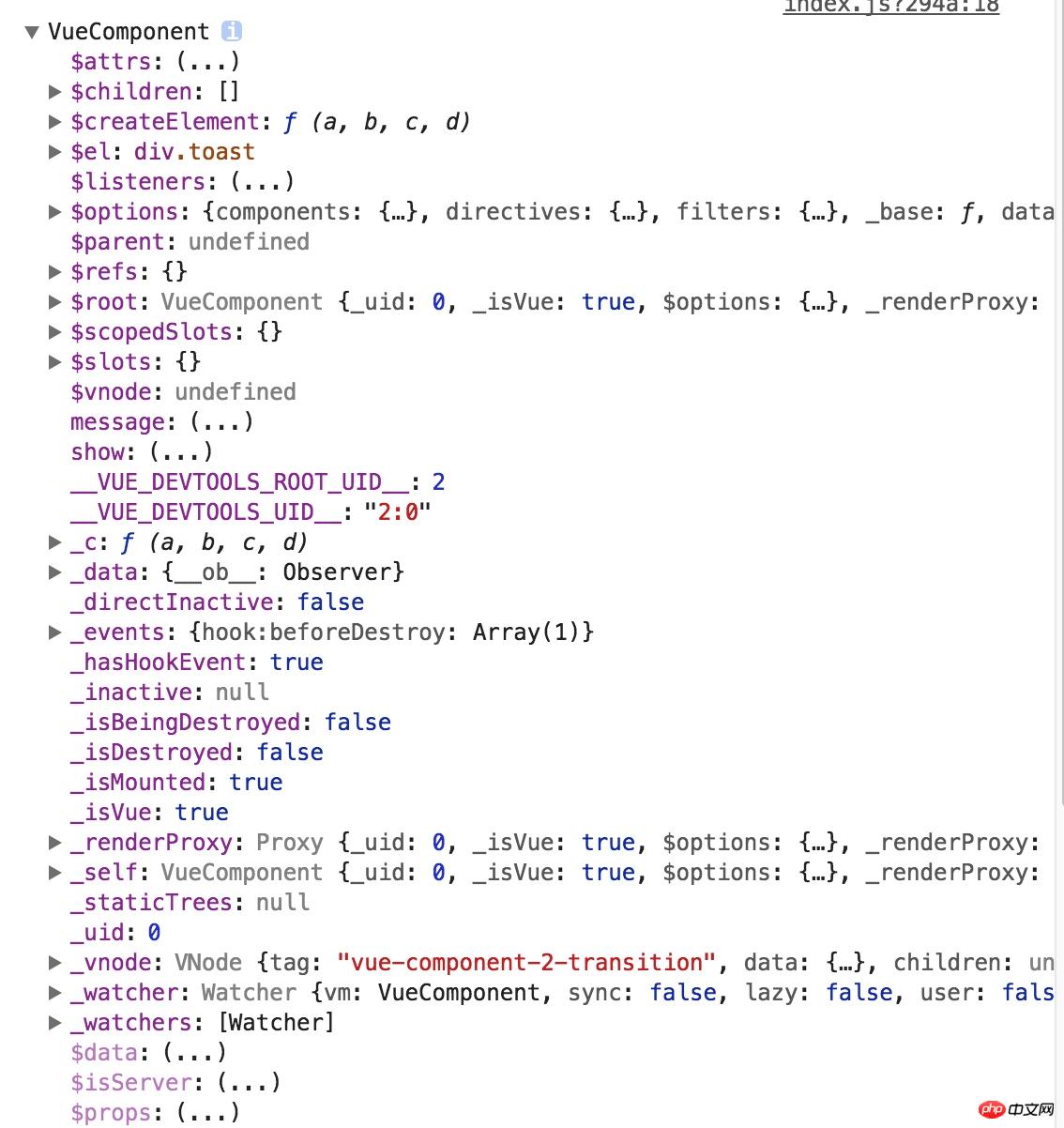
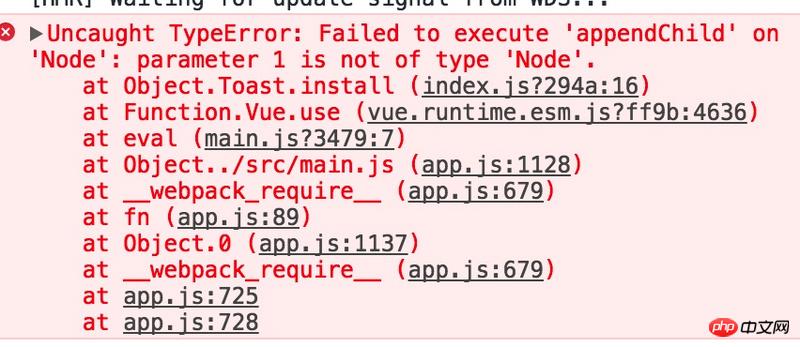
document.body.appendChild(instance.$el)
##There is a problem with
instance.$el, okay, let’s check this in the console. WTF! ! ! ! The result turned out to beundefined.Then go on
console.log(instance)
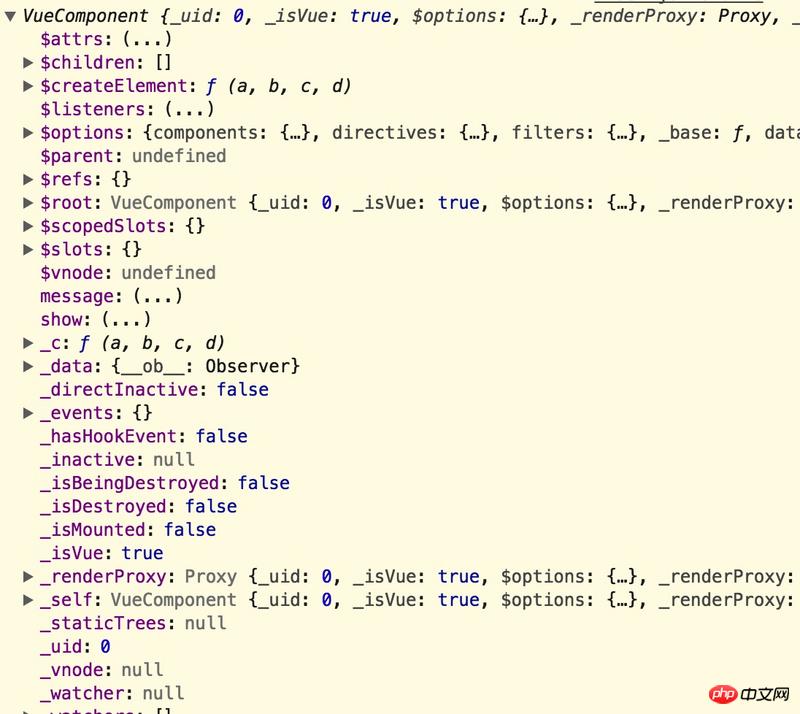 And up Comparing a picture, what did you find? Yes, $el disappeared. In other words, after I commented the sentence
And up Comparing a picture, what did you find? Yes, $el disappeared. In other words, after I commented the sentence
instance.$mount(document.createElement('p'))
, The mount point no longer exists. Then I tried to change this sentence:
instance.$mount(instance.$el)
$el magically came back... …………
No problems have been found with this change for the time being, and it can be run as above. But in any case, this means that the instance must be mounted on a node for subsequent operations. The code after
is simple. It is nothing more than adding a method to change the plug-in state on the Vue prototype. Then export this object.
The next step is how to use it. Let’s take a look at how main.js is written:
import Vue from 'vue' import App from './App' // import router from './router' import Toast from './components/taost' Vue.use(Toast) Vue.config.productionTip = false /* eslint-disable no-new */ new Vue({ // router, render: h => h(App) }).$mount('#app')
// app.vue
通过在methods中增加一个方法控制写在Vue原型上的$toast对toast组件进行操作。
这样toast组件的编写过程就结束了,可以看到一开始gif图里的效果。
loading插件
经过上一个插件的讲解,这一部分就不会那么细致了,毕竟大多数都没有什么不同,我只指出不一样的地方。
这个就只是一个模板,传入两个父组件的数据控制显示效果。
那再来看一下该插件的配置文件:
import LoadingComponent from './loading.vue' let Loading = {}; Loading.install = (Vue) => { Vue.component('loading', LoadingComponent) } export default Loading;
这个和taoat的插件相比,简单了很多,依然是一个空对象,里面有一个install方法,然后在全局注册了一个组件。
比较
那介绍了这两种不同的插件编写方法,貌似没有什么不一样啊,真的是这样么?
来看一下完整的main.js和app.vue这两个文件:
// main.js import Vue from 'vue' import App from './App' // import router from './router' import Toast from './components/taost' import Loading from './components/loading' Vue.use(Toast) Vue.use(Loading) Vue.config.productionTip = false /* eslint-disable no-new */ new Vue({ // router, render: h => h(App) }).$mount('#app') // app.vue
可以看出来,loading是显示的写在app.vue模板里的,而toast并没有作为一个组件写入,仅仅是通过一个方法控制显示。
来看一下html结构和vue工具给出的结构:
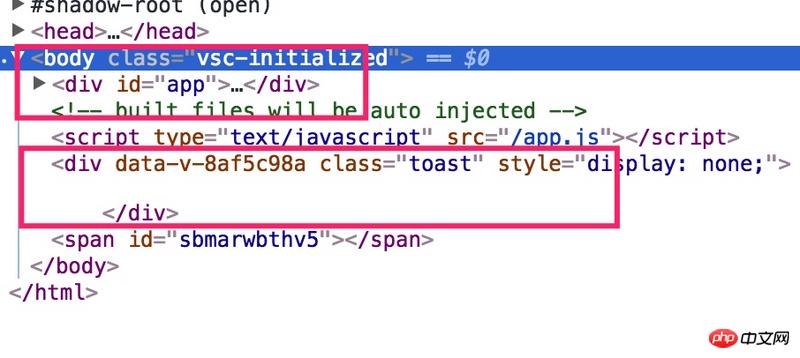
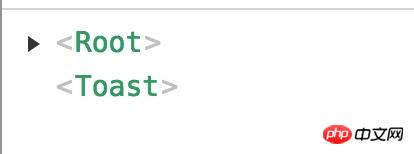
看出来了么,toast插件没有在挂载点里面,而是独立存在的,也就是说当执行
vue.use(toast)
相关推荐:
The above is the detailed content of How to write vue plug-in vue.js example tutorial. For more information, please follow other related articles on the PHP Chinese website!




